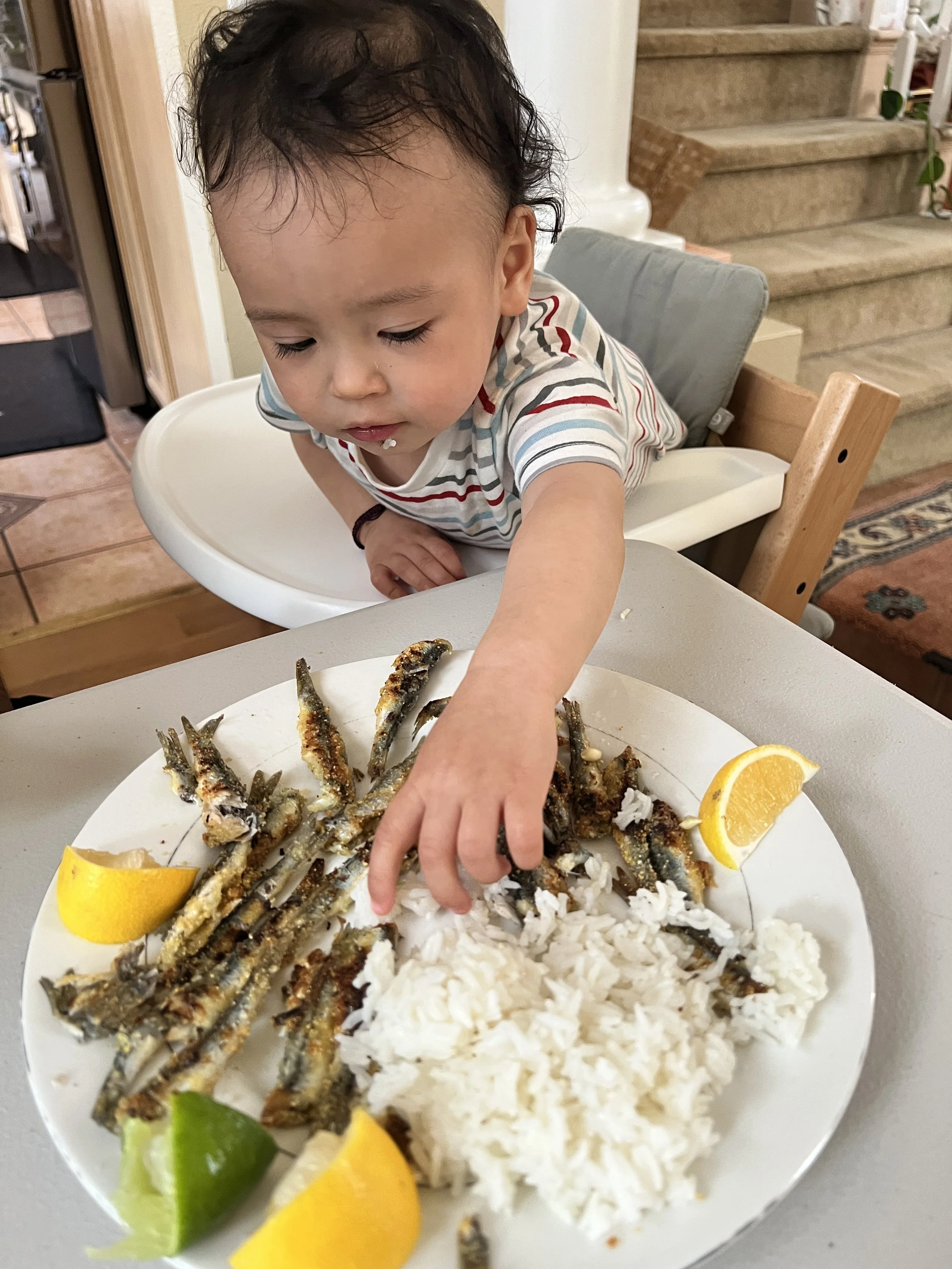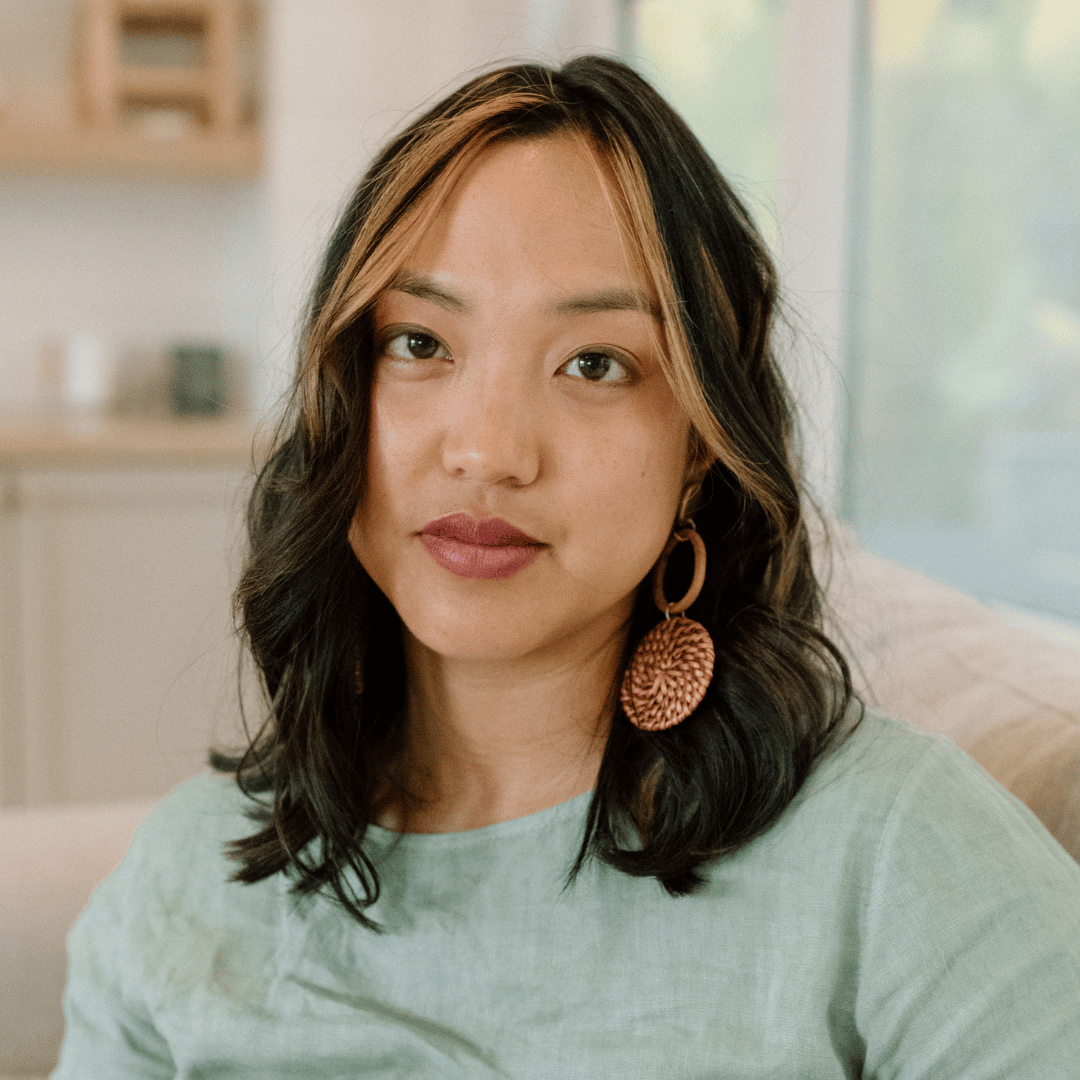Finding Our Sea Legs: A Family's Journey to Local San Diego Seafood
Alyssa Celones Senturk
Tuna Harbor Dockside Market on a sunny Saturday morning.
All images, Alyssa Celones Senturk.
Diving Into the Unknown
I had the pleasure of meeting Emily Miller at the San Diego Food System Alliance's first Annual Gathering in 2021, where she spoke about her deep cultural connection to seafood through her Korean American heritage. After her talk, I fangirled my way into chatting with her and came away inspired, clutching Fishful Future pamphlets that still adorn my fridge. Despite working in water and climate justice for almost a decade and being personally invested in our local food communities, seafood remained daunting and mysterious to me. It felt like wading into a local surf spot for the first time—white-knuckling a beginner foam board, nervous but eager to learn.
Since meeting Emily several years ago, we've stayed connected through various gatherings and, most recently, through San Diego Seafood: Then & Now, a charitable local cookbook she helped to curate and edit. When an opportunity arose to support the development of the cookbook and score a private tour of the Tuna Harbor Dockside Market, I jumped at the chance. Dr. Theresa Talley and Emily met my family on a sunny January morning, where we learned about San Diego's historical fishing economy, local fishing families, and the resources needed to run a small seafood enterprise.
The bright gills on a California Sheephead are one of many cues that tell us, “this fish is very fresh!'“
The market tour was eye-opening. I discovered how to spot fresh fish (clear, not frosted eyes and vibrant red gills) and learned basic preparation techniques for different species. Though cleaning whole fish still intimidates me, knowing they offer cleaning services on-site made it less overwhelming. I've also found YouTube tutorials invaluable for learning these skills at home.
What struck me most was the passion these local fishers have—not just for their catch, but for their connection to San Diego's waters and the community they serve.
This newfound confidence led me to visit the Fishermen’s Market of North County with my 16-month-old son, where we attended an educational workshop with San Diego chefs on preparing local catch. Together, we sampled a Kellet’s whelk bolognese and a sardine crostini—foods I wouldn't have known how to approach before. Watching my son eagerly taste these new flavors was both surprising and delightful. I'm grateful that the Fishful Future team encouraged my growing interest and invited me to share this journey.
Salt in Our Blood
My multicultural heritage, background in water and climate justice, and newest identity as a mother all converge in my exploration of how we feed our families. As a new mom and recovering people-pleaser, I often feel pressure to give my family everything I missed growing up. Amid the hustle and noise of modern life, I'm constantly fighting the urge to compare myself and my child to others on social media. This year, we've made a conscious decision to focus on quality time together, staying present and connecting more in real life rather than through screens.
One place of solace throughout my caregiving journey has been providing delicious, nutritious food for my family. As a self-professed food nerd, home chef, chaotic gardener, and sustainability enthusiast, feeding those I love is my zone of genius. From researching quality dog food for our rescue Zelda to finding nutrient-dense, culturally aligned recipes our whole family can enjoy, food connects us. Our approach focuses on making meals that resonate with our multiethnic family roots while nourishing our bodies and the communities we're part of.
Our family's blended ancestry is steeped in water. I was just a few months old when the U.S. Navy stationed my family in San Diego (Mira Mesa represent!). My parents are from the Philippines, a nation of thousands of islands surrounded by the Pacific. My father—a fisherman and farm boy raised by generations of fishermen and farmers—served in the Navy for 26 years, while my mother grew up as a "city girl" in the urban port city of Olongapo. My husband was born in Türkiye, his family is originally from the Black Sea region, where they grow hazelnuts along misty mountainsides. Now, living in Escondido, we try to spend as much time by the water as possible, especially during our hot summers.
Growing up, seafood marked special occasions in my Filipino household. Nothing said "celebration" like our family caravanning to Barona or Viejas Casino for Mother's Day, where plates piled high with crab legs, shrimp, and mussels at the all-you-can-eat buffet were the ultimate expression of love. I remember my aunt arriving from Washington State one summer with a suitcase full of Dungeness Crabs—we spread newspapers in the backyard and feasted for hours, laughing and telling stories while picking at our bounty.
Everyday moments were marked by trips to Seafood City for tilapia to be fried and served with white rice and pickled cucumber salad (ensaladang pepino). I cherish memories of my mom and I enjoying a sour and salty treat of green mangoes dipped in fish or shrimp paste (bagoong)—a flavor combination that captures one of the many essences of Filipino culinary tradition. Now, my husband and I celebrate anniversaries with sushi and prepare Cajun-style seafood boils for Valentine's Day and family gatherings.
Alyssa, Emir, and Resul enjoying the San Diego sunshine.
Emir enjoys local fried anchovies (hamsi tava) at home in San Diego.
Connecting Places, People, and Plates
While these moments are meaningful, I believe they can be enriched by deepening our roots in place and community. I will continue to visit and support our beloved Asian-American grocery stores, but I'm learning to think twice when shopping for seafood. As someone who works in water and climate justice and considers myself an environmentalist, I believe that how we eat can change the world. Being mindful of what we put on our plates can improve both personal health and planetary well-being.
It's ironic that my concept of "local seafood" developed during travels abroad—from ceviche in Peru to fresh-caught salmon in Alaska, red snapper in Costa Rica, and fried anchovies in Türkiye.
Although San Diego and the entire Baja California region are known for fresh seafood, I had no idea how to access that market locally. Farmers' markets feel more accessible simply because they're familiar, while seafood remains intimidating when you don't know different varieties or how to prepare them.
I consider myself a guest on this land and feel called to learn the ways people have lived here in harmony with nature. The Kumeyaay, excellent fishermen and ocean navigators, have sustained these practices for generations. Today's local fishermen and farmers continue this tradition of stewardship, knowing the best ways to grow and harvest nutrient-dense, delicious food in our unique coastal environment.
The author enjoying a dive in Cabo San Lucas, México.
Feeding Our Future
As food and water grow scarcer and more expensive, local food economies will become increasingly important. Fresh food grown and caught locally is more delicious, nutritious, and especially satisfying, knowing we're reinvesting in our community. For me, exploring local seafood is a natural extension of my work in water and climate justice. It bridges my professional commitment to protecting our precious life-giving gifts with my desire to nourish my family sustainably.
We recently invested in a local cow share with another family, enjoying the process of learning how to cook with different cuts of meat throughout the year. Extending this approach to seafood feels like a natural progression as we reconsider our relationships with larger food systems that don't align with our values. By focusing on our neighbors and community, we find a more enriching and rewarding path forward.
For me, this journey is about answering deeply meaningful questions: What can I do now with what I have available? What feels authentic to my family's heritage? How can we nurture our community so we all feel safe raising our children in this world?
By supporting local fishers and embracing San Diego's local catch, I'm finding answers—one family meal at a time.
Meet the Author
Alyssa Celones Senturk
Alyssa Celones Senturk (she/they) is a water and climate justice advocate who believes in the power of storytelling to bridge cultures, communities, and policy solutions. Currently serving as the senior communications and outreach manager at the California Water Data Consortium, she brings a strategic approach to water conservation, climate resilience, and community engagement. When not protecting our waters and wilds, Alyssa can be found in her garden, cooking for loved ones, or exploring outside with her family.
Connect with Alyssa on LinkedIn!






